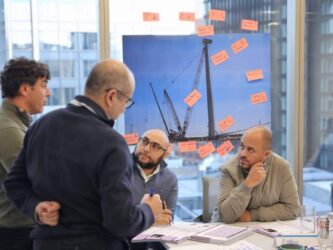What does working in wind power have in common with flying an F-16 Fighting Falcon into combat? You might be thinking, ‘not much’, but think again.
In the fast-paced, rapidly developing wind power sector, every decision counts. If you can make informed decisions at the point of need, you will increase productivity, reduce risk and ensure a safer working environment.
Colonel John Boyd, an F-86 pilot and US military strategist, was fascinated by pilot decision-making. He developed the OODA (observe, orient, decision, action) loop to help explain how we can make agile decisions in high stake situations.
Boyd’s loop shows how our decision-making takes place in a recurring OODA cycle. At ARMSA Academy, we believe equipping people to make informed decisions on the ground is key to performance, so we support decision-making in the workflow.
Underpinning all our decision-making tools is the orient phase of the OODA loop. The first stage of the loop is observation: looking at what is happening – the visual and other clues around you. But what ultimately makes a decision is the orient phase.
This taps in to everyone’s unique algorithm: how we each go about making decisions. According to the OODA loop, this involves our cultural traditions, genetic heritage, our ability to analyse and synthesise data, our previous experiences and how we take in new information.
All this, working interactively within us, in split seconds gives rise to a decision, followed by an action, and then watching what happens. And so the loop goes on, starting again with observe.
ARMSA Academy does not train you to carry out a process or comply with regulatory requirements. Instead, we help to shape the way you go about making decisions, and appeal to the unique algorithm that leads to those decisions.
To find out more about our decision-making tools, follow us and sign up to our Newsbyte below.
Can you think like a fighter pilot? © 2021 by Rakesh Maharaj – ARMSA is licensed under CC BY-NC-ND 4.0







